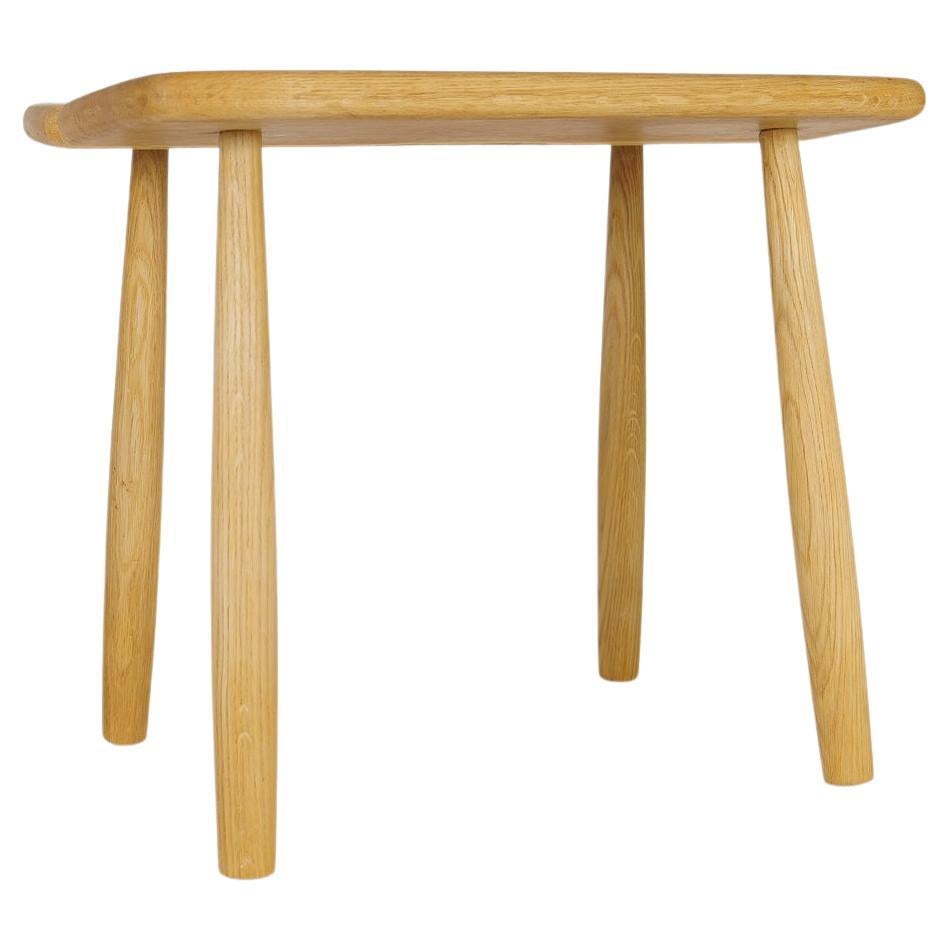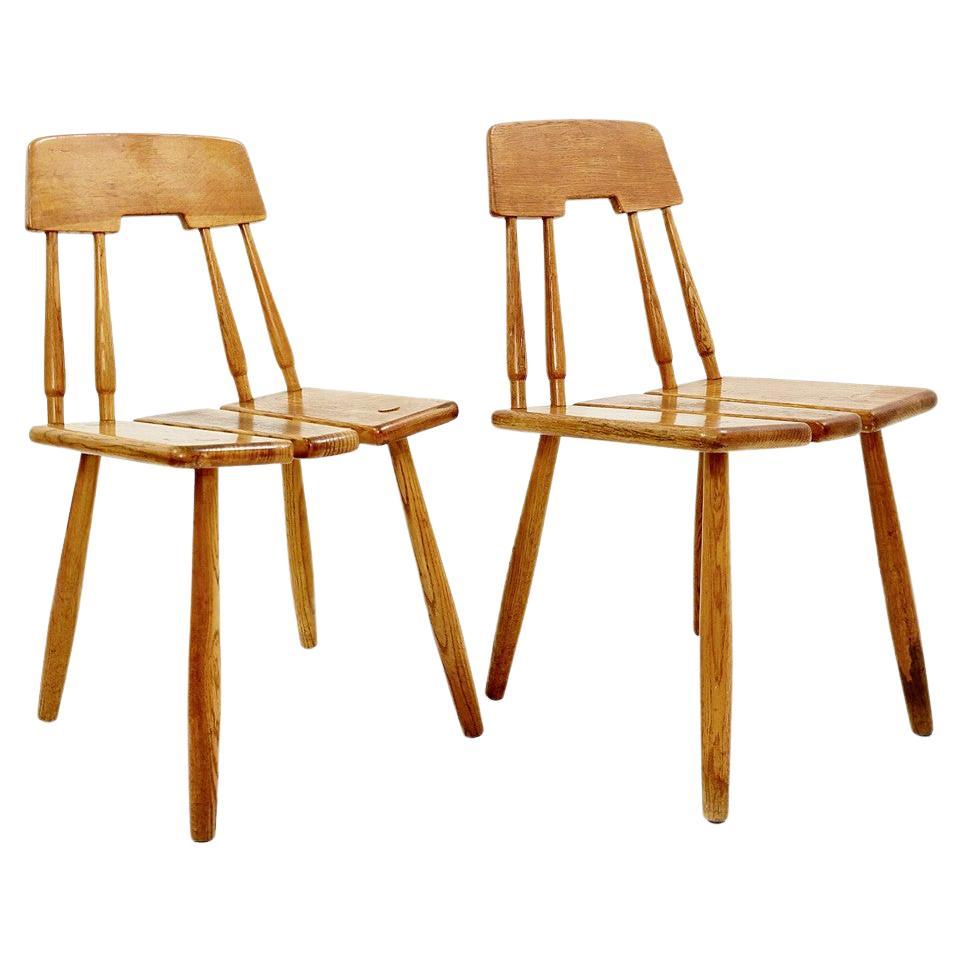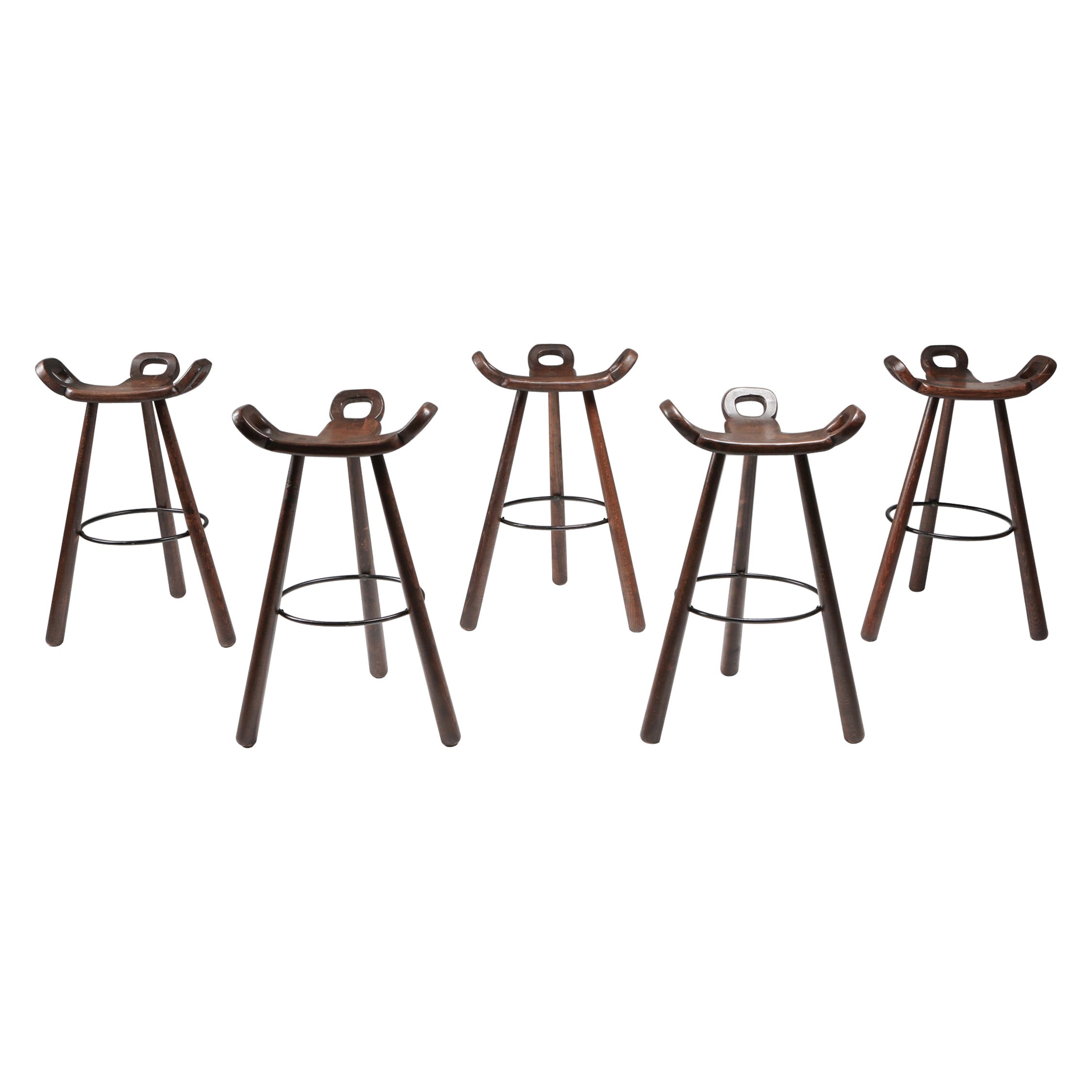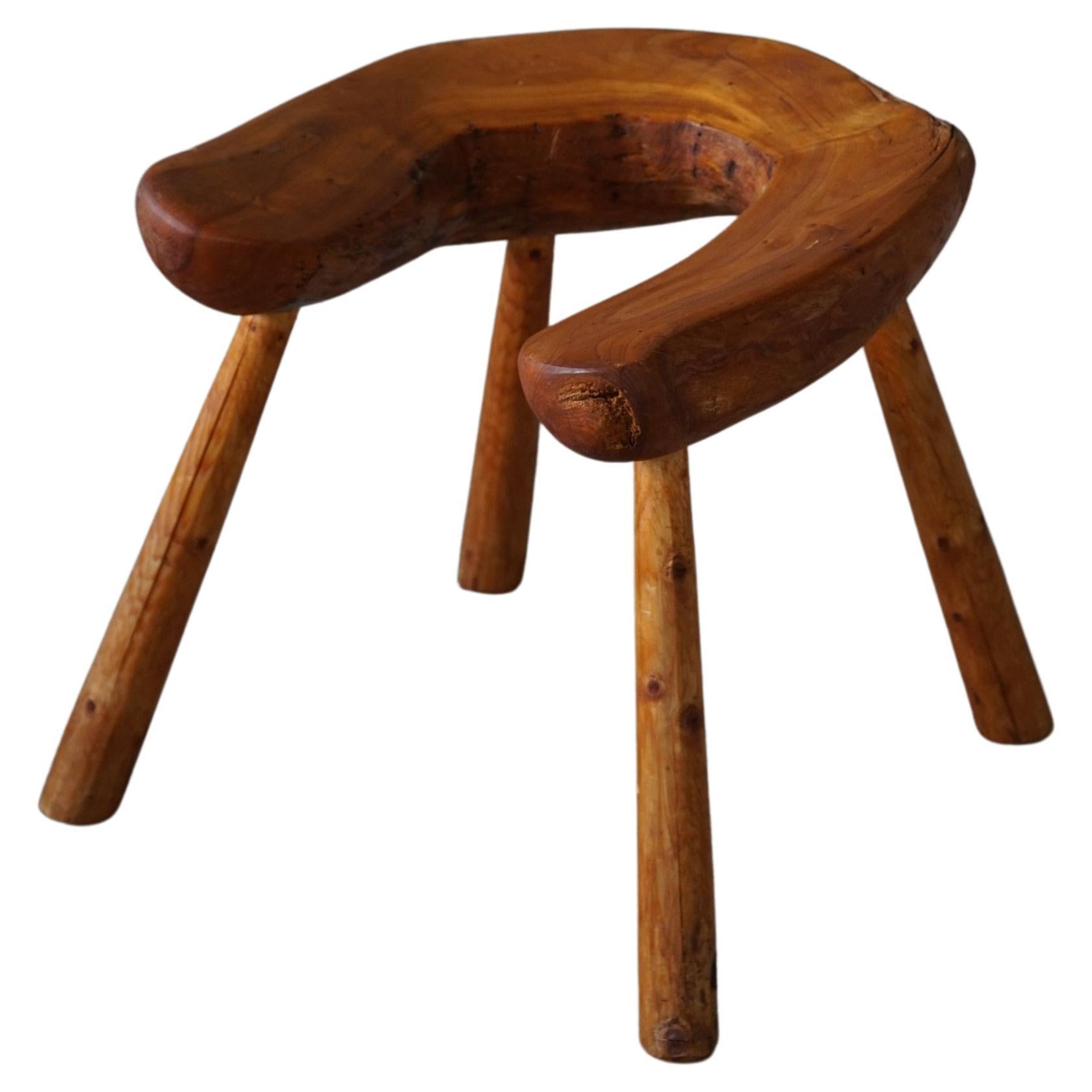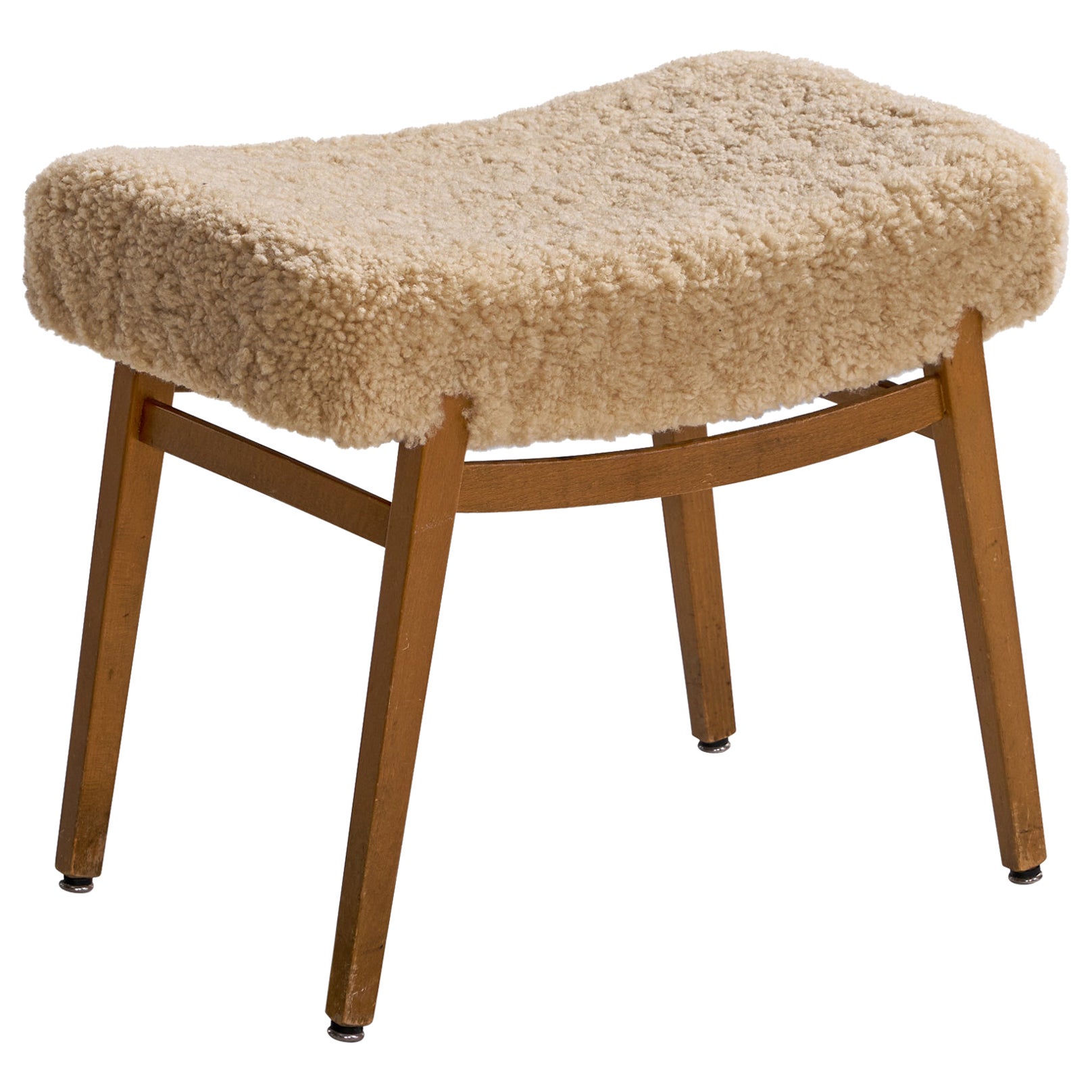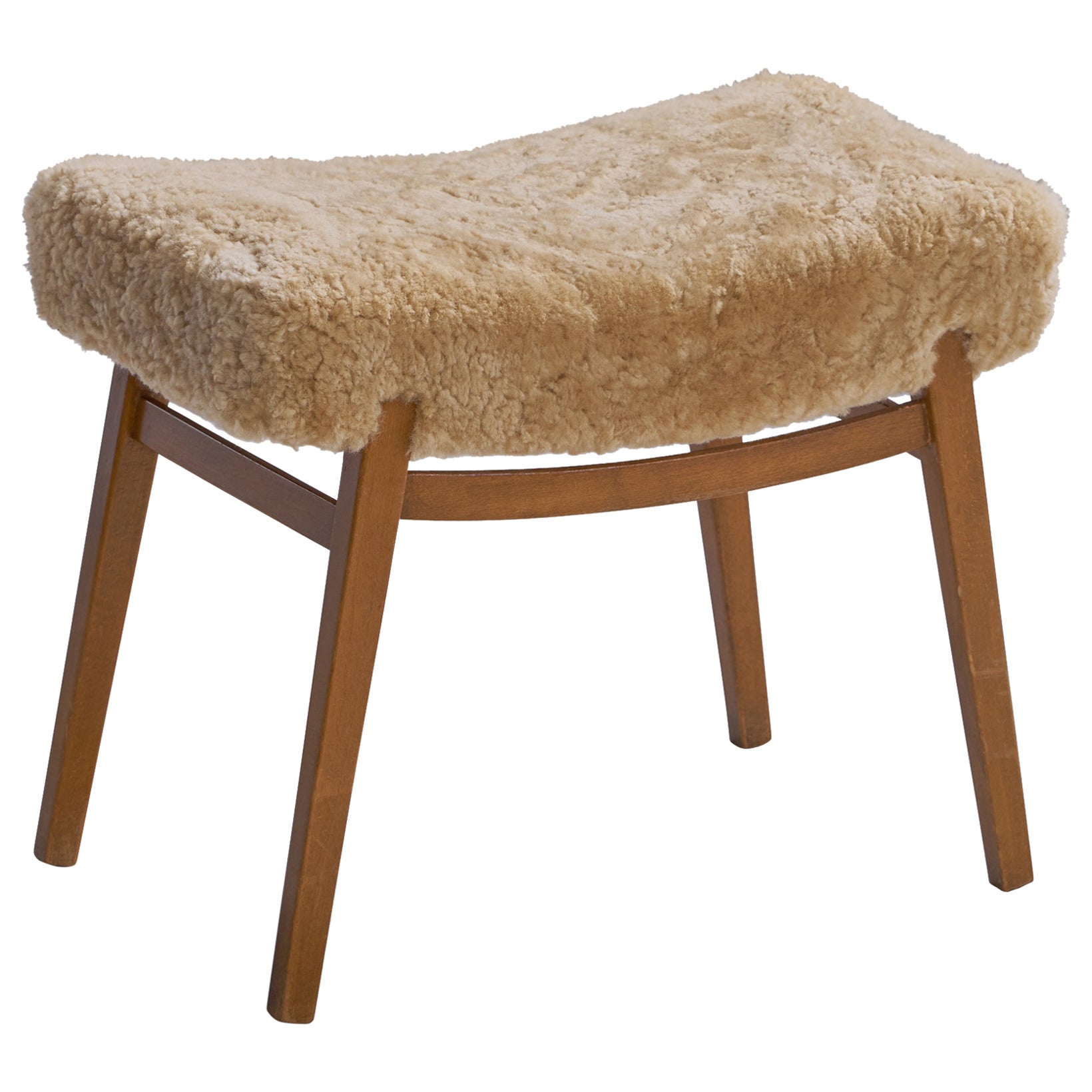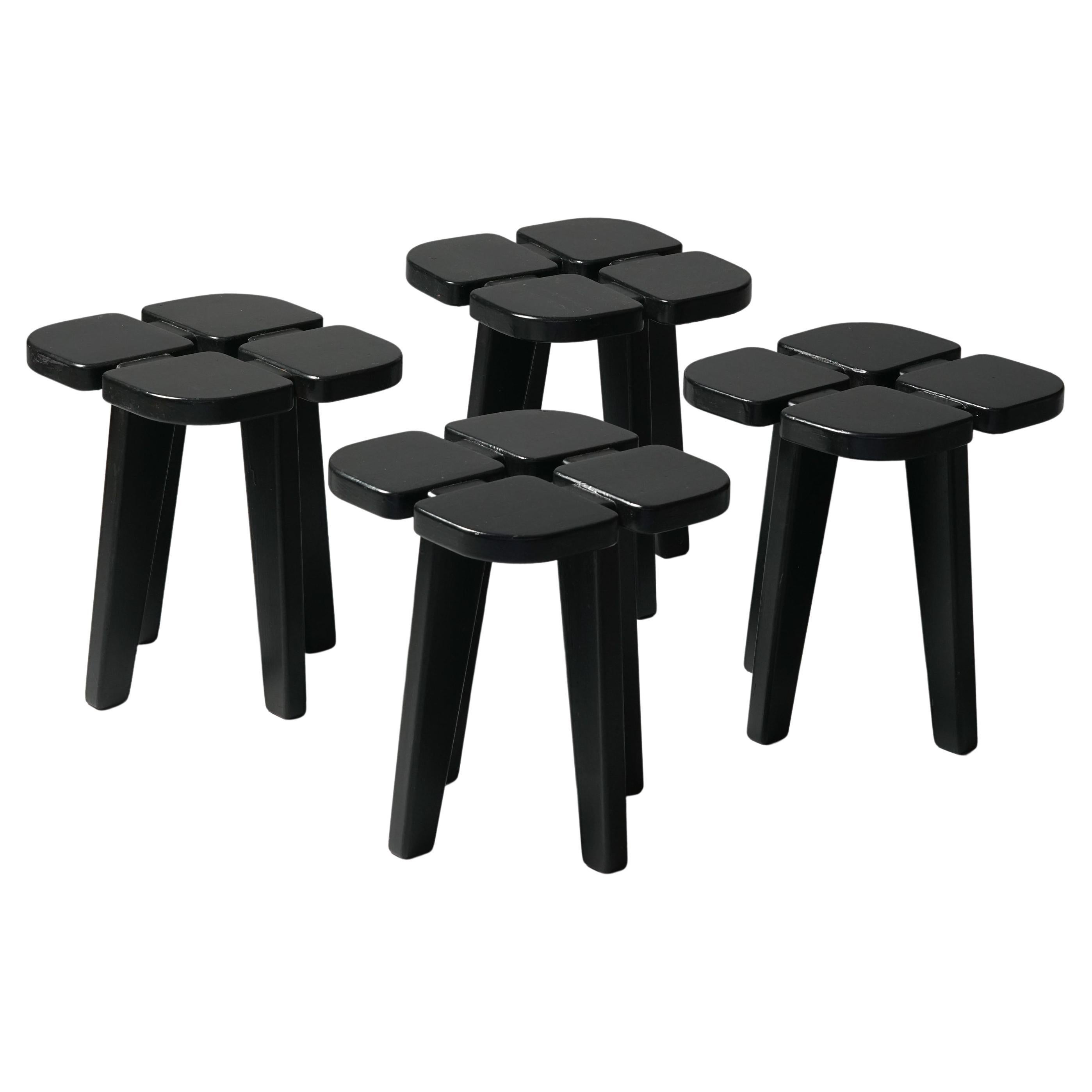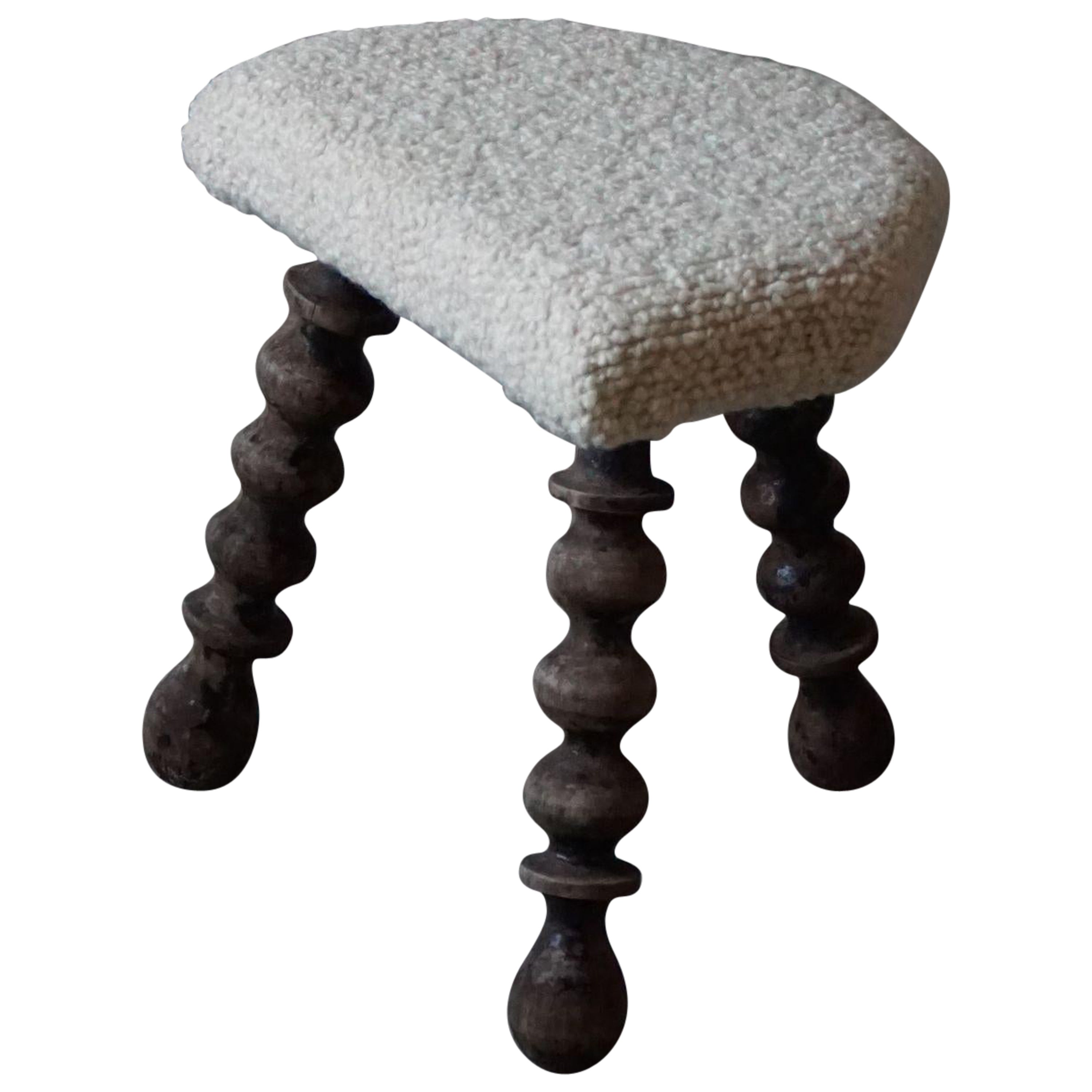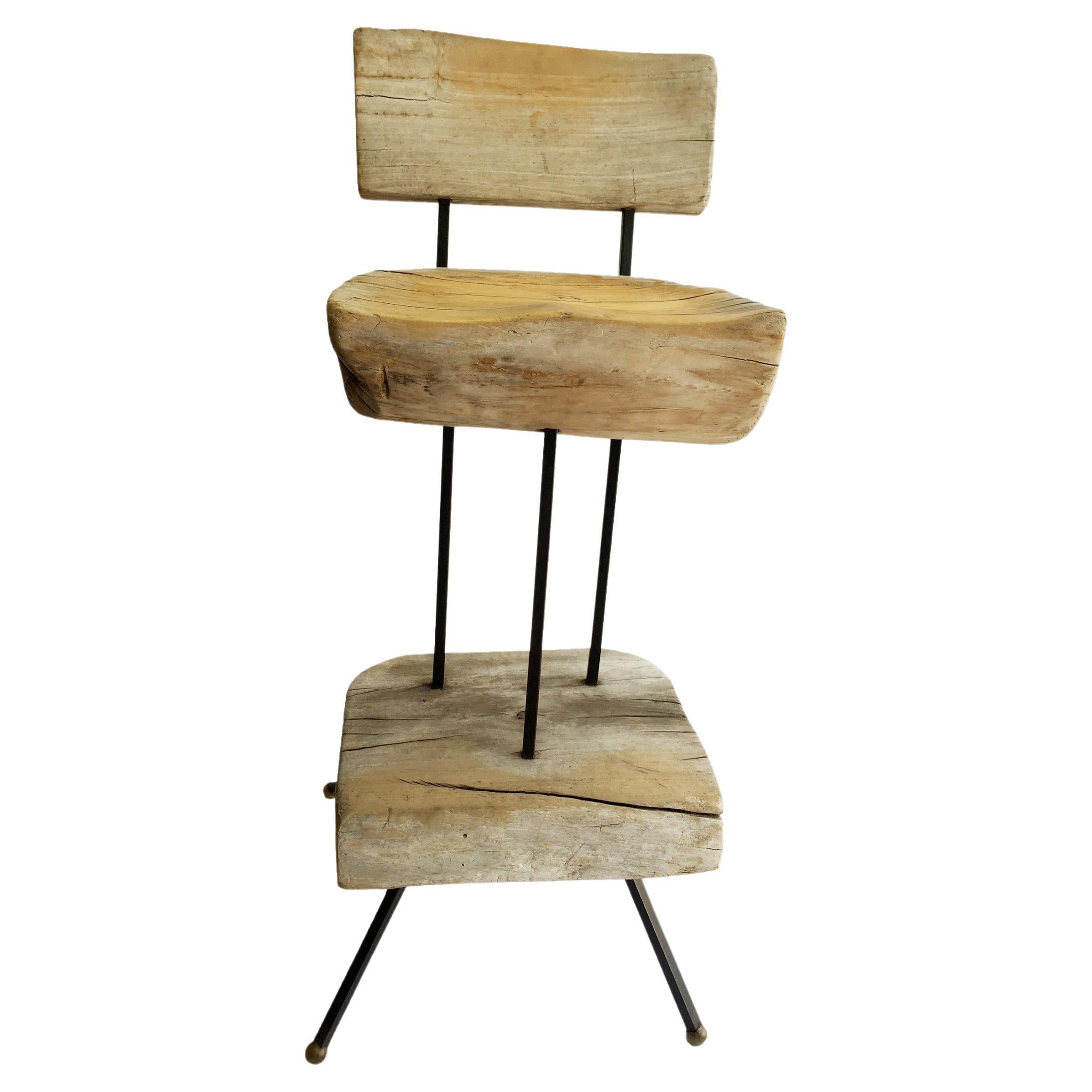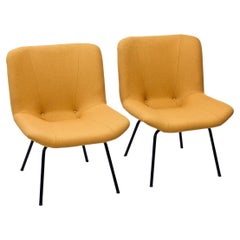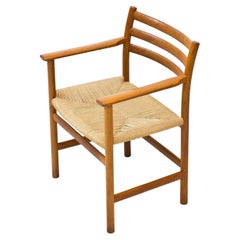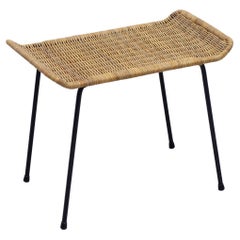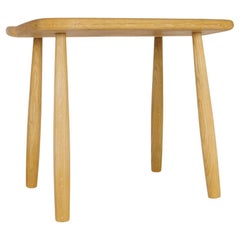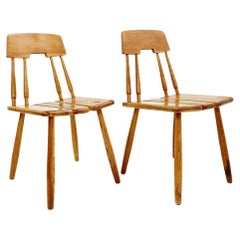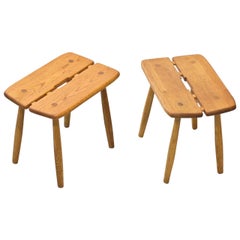
Pair of Swedish Oak Stools by Carl Gustaf Boulogner, 1950s
View Similar Items
Want more images or videos?
Request additional images or videos from the seller
1 of 10
Pair of Swedish Oak Stools by Carl Gustaf Boulogner, 1950s
About the Item
- Dimensions:Height: 17.72 in (45 cm)Width: 20.48 in (52 cm)Depth: 13.78 in (35 cm)Seat Height: 17.72 in (45 cm)
- Sold As:Set of 2
- Style:Scandinavian Modern (Of the Period)
- Materials and Techniques:
- Place of Origin:
- Period:
- Date of Manufacture:circa 1950
- Condition:Refinished. Wear consistent with age and use.
- Seller Location:Stockholm, SE
- Reference Number:Seller: SE-1131stDibs: LU2889320320442
About the Seller
4.9
Vetted Seller
These experienced sellers undergo a comprehensive evaluation by our team of in-house experts.
Established in 2014
1stDibs seller since 2017
93 sales on 1stDibs
Typical response time: 1 hour
More From This SellerView All
- Scandinavian Modern Lounge Chairs by Carl Gustaf Hiort Af Ornäs, FinlandBy Puunveisto OYLocated in Stockholm, SERare pair of Scandinavian Modern lounge chairs, model “Lehti” (leaf) designed by Carl Gustaf Hiort af Ornäs. Manufactured by Puunveisto Oy - Träsnideri in Finland during the 1950s. ...Category
Mid-20th Century Finnish Scandinavian Modern Lounge Chairs
MaterialsMetal
$4,995 Sale Price / set35% Off - Teak & Paper Cord Armchair by Poul Volther, Denmark, 1950sBy Poul Volther, Sorø StolefabrikLocated in Stockholm, SEArmchair model 351 designed by Poul Volther. Manufactured in Denmark by Sorø Stolefabrik in the 1960s. Made from teak with paper cord seat. Good vintage condition with signs of ...Category
Mid-20th Century Danish Scandinavian Modern Armchairs
MaterialsPapercord, Teak
- Wicker Stool by Gian franco LeglerBy Gian Franco LeglerLocated in Stockholm, SEWicker stool attributed to Swiss designer Gian Franco Legler, manufactured during the 1950s. Made from cane with black lacquered metal frame.Category
Mid-20th Century Swiss Mid-Century Modern Stools
MaterialsSteel
- Swedish Metal Wall Lamp by Boréns, 1950sBy Boréns BoråsLocated in Stockholm, SEWall lamp manufactured by Boréns at Borås in Sweden during the 1950s. Made from grey lacquered metal and aluminum.Category
Mid-20th Century Swedish Scandinavian Modern Wall Lights and Sconces
MaterialsMetal, Aluminum
- Solid Teak Swedish Planter, 1950sLocated in Stockholm, SESwedish teak planter manufactured during the 1950s. Made from solid teak slats and metal tray. Tray with adjustable height. Very good vintage condition.Category
Mid-20th Century Swedish Scandinavian Modern Planters, Cachepots and Jar...
MaterialsTeak
$422 Sale Price30% Off - Swedish Modern Rattan Mirror, 1950sBy Josef FrankLocated in Stockholm, SESwedish modern mirror manufactured in Sweden during the 1950s. Solid teak frame with hand woven rattan. Beautifully aged color on the cane. Good vintage condition with light wear...Category
Mid-20th Century Swedish Scandinavian Modern Wall Mirrors
MaterialsRattan, Mirror, Teak
You May Also Like
- Midcentury Sculptural Stool in Solid Oak by Carl Gustaf Boulogner Sweden 1950sBy AB Bröderna Wigells Stolfabrik, Carl Gustaf BoulognerLocated in Hillringsberg, SEA stool in solid oak with nice complexity in the structure. Shifting grain in the oak gives it a nice look. This stool is a good example of the good craftsmanship and minimalistic stile to come in Scandinavian furniture. The oak bench was designed by Carl Gustaf Boulogner...Category
Vintage 1950s Swedish Mid-Century Modern Stools
MaterialsOak
- Carl-Gustav Boulogner Chairs in Oak, Produced by Ab Bröderna Wigells StolfabrikBy AB Bröderna Wigells Stolfabrik, Carl Gustaf BoulognerLocated in Brussels , BECarl-Gustav Boulogner chairs in oak. Produced by AB Bröderna Wigells stolfabrik. 1950s a pair available Sold par pieceCategory
Vintage 1950s European Mid-Century Modern Chairs
MaterialsWood
- Scandinavian Bar Stools by Carl Malmsten, Sweden, 1950sBy Carl MalmstenLocated in Antwerp, BEScandinavian modern bar stools by Carl Malmsten, made in 1950s Sweden. Embodying the essence of mid-century aesthetics, these stools have a sturdy construction of solid beech wood, m...Category
Vintage 1950s Swedish Mid-Century Modern Stools
MaterialsSteel
- Wabi Sabi Stool in Solid Pine, Handcrafted by a Swedish Cabinetmaker, 1950sLocated in Odense, DKDecorative Scandinavian stool with organic shape in solid pine. Hand carved by a Swedish cabinetmaker in 1950s. This wabi sabi stool will fit in many types of home decors. Modern, S...Category
Mid-20th Century Swedish Mid-Century Modern Stools
MaterialsPine
- A Pair of Scandinavian Bar Stools by Carl Malmsten, 1950sBy Carl MalmstenLocated in Chicago, ILScandinavian modern bar stools by Carl Malmsten, made in 1950s Sweden. Embodying the essence of Nordic mid-century aesthetics, these stools combine sturdy solid beech construction an...Category
Mid-20th Century Swedish Stools
MaterialsLeather, Beech
- Stool Model 927 Designed by Josef Frank for Svenskt Tenn, Sweden, 1950sBy Josef FrankLocated in Stockholm, SEStool model 927 designed by Josef Frank for Svenskt Tenn, Sweden, 1950s. Mahogany and rattan. Measures: H: 43 cm W: 43 cm D: 28 cm Josef Frank was a true European, he was also a pioneer of what would become classic 20th century Swedish design and the “Scandinavian Design Style”. Austrian- born Frank started his design career as an architect after having trained at the Technische Hochschule in Vienna between 1903 and 1910. After his training he went on to teach at Kunstgewerbeschule (The Viennese School of Arts and crafts) where he developed and espoused the new school of modernist thinking towards Architecture and Design that was coming to fruition in Vienna at the time. He also went on to lead the Vienna Werkbund throughout the 1920s. This was a truly progressive group of Architects and Designers who set about improving the daily lives of Austrian people through modernist design and architecture in partnership with Arts and Crafts ideals and construction. Frank’s leadership of the Werkbund had already cemented his place at the forefront of European design. Frank’s time in Vienna was typified by his design for the “Die Wohnung” exhibition of the Deutscher Werkbund in Stuttgart, 1927 where he exhibited along side his contemporaries at the forefront of design, such as the likes of Le Corbusier and Walter Gropius. Here he showed a specially designed pair of flat-roofed reinforced concrete houses in what is now seen as a typical modernist style. What separated Frank’s house from the other 32 houses of the exhibition was the interior and furniture inside the building. It was described as “Neo-Classical” and filled with an eclectic mix of period pieces, modern design and pieces designed by Frank himself that seemed to cross the two worlds. This was a complete opposite direction to that which his fellow Architects were travelling in with their pared back and angular aesthetics. Frank said of his own work: “The house is not a work of art, simply a place where one lives,” and by this reasoning Frank rejected the regimental mechanisation of the living space that his contemporaries believed in, instead he set about creating congenial and spontaneous interiors. Frank’s practice saw him placing the bright colours and the soft forms of nature back into the furnishings and interiors that he thought modernism sorely mist. Frank, along with Oskar Walch set up Haus und Garten in Vienna in 1925. This was Frank’s first commercial foray into furniture and home furnishings and the company went on to become the most influential furnishing house in Vienna with a riotous depth of colour and interesting shapes becoming the trademark of their design. However this success was to come to an end with rise of Nazism in Vienna in the early 1930’s. Frank was Jewish, and he and his wife Anna decided they would leave Vienna for her motherland: Sweden, in 1933. Frank continued to design for Haus and Garten, visiting Vienna occasionally and designing the pieces that would continue to be the company’s best sellers long after Frank was forced to hand the company over in 1938 after the Third Reich annexation of Austria. When Josef and Anna had moved to Sweden Frank had struck up a working relationship with Design shop owner Estrid Ericson. Ericson was the proprietor of Svenskt Tenn that at this point was a successful interiors shop in Stockholm with the royal warrant of appointment to the Swedish Royal Household. In 1935 Frank had become the chief designer for Svenskt Tenn and had set about putting all of his creative effort into his designs for the company. At the World Expositions in Paris in 1937 and New York in 1939 the world saw for the first time the wealth of products that Frank had been working on, ranging from candlesticks to cabinets, there was not a domestic object that Frank had not subjected to his colourful, comfortable and organic style of Modernism. Frank’s new school of Modernism championed ideas such as chairs having a freeing, open back and that “If one desires the room to be comfortable…all pieces of furniture should allow for a free view of the separating line between the floor and the wall. A cabinet without legs breaks this line and thus reduces the feeling of space.” A world-wide audience tired of classic Modernism’s furniture with solid planes and aggressive forms leapt upon these ideas and Franks natural and bright designs for Svenskt Tenn became internationally desired. Frank created over 2000 designs for Svenskt Tenn and his products continue to be the core of their brand. Frank’s rejections of tubular metal and heavy lacquers within his furniture have insured his unique light form of Modernism continues to influence and flourish today. His natural toned mahogany and walnut pieces along with his tactile leather covered and brightly shaded lighting still bring the forms of nature back into the home. Original Frank pieces are now increasingly rare, highly desirable and are the epitome of “Scandinavian Design”. Renowned Designer and Academic Isle Crawford...Category
Vintage 1950s Swedish Mid-Century Modern Chairs
MaterialsRattan, Mahogany
Recently Viewed
View AllMore Ways To Browse
Carl Gustaf Boulogner
Carl Gustaf Boulogner Stool
Boucle Stool
Single Stool
Bar Stool 1960s
Pair Of 1950s Stools
Stool Work Chair
Retro Oak Stool
Black And Metal Bar Stools
Retro Black Leather Stool
Industrial Steel Stool
Stools Modern Wood Pair
Bar Stools With A Back
Wood Bar Height Stools
Antique Oak Stool
Oak Stool Antique Furniture
Antique Oak Stools
Vintage Elm Wood
